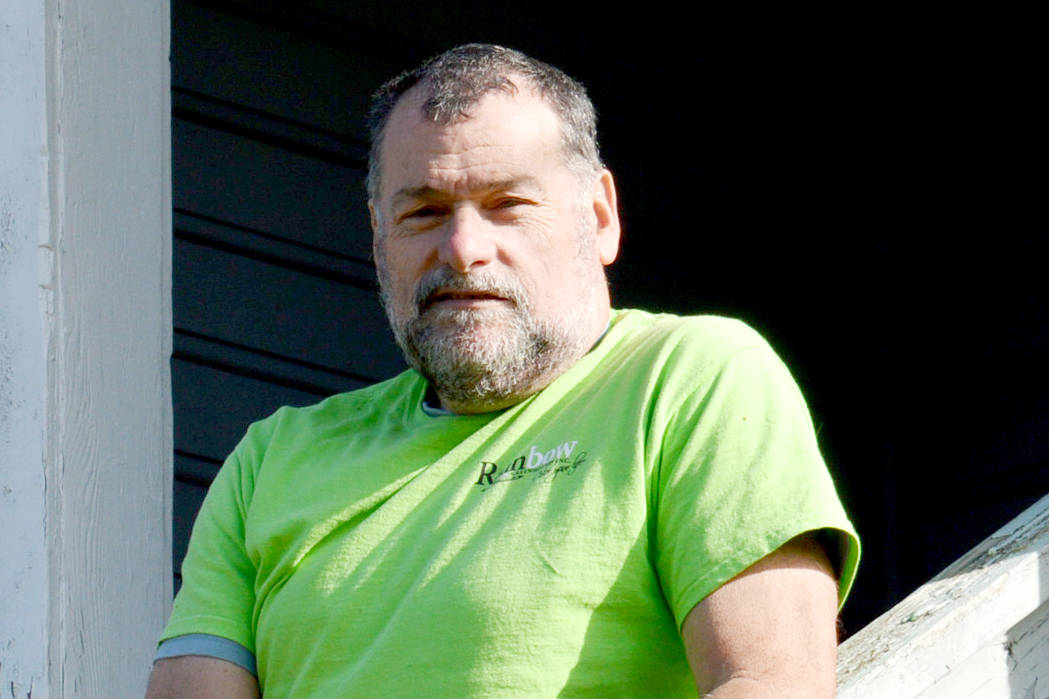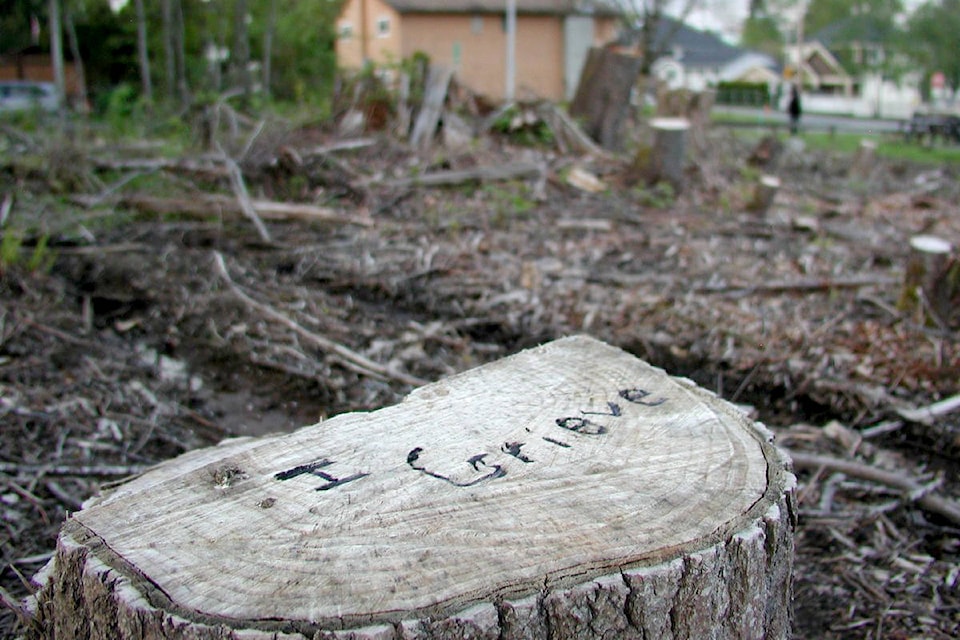SURREY — The president of Surrey’s historical society says city council is devastating the city’s tree canopy in the name of progress.
Michael Gibbs sent a letter to Mayor Linda Hepner on June 14, on behalf of the group, advocating for the importance of the “natural” history in Surrey.
Gibbs wrote he and the entire society are “distressed to see so many trees of significant size” being removed.
“We are always advised that thousands of young trees are planted in Surrey each year, which is commendable, but we also desire to see the old ones remain, standing tall and proud,” he added.
As of June 20, Gibbs tells the Now-Leader he hasn’t received a response from the Mayor.
Click here to read the letter.
A report to council earlier this month revealed that in the past five years roughly 5,200 tree cutting permits were issued for a total of nearly 42,000 trees. Permits were also issued to remove nearly 1,300 “hazardous” trees.
Almost 56,000 trees were planted on private property to replace those cut as a result of development, the report noted.
Meanwhile, the report stated that over the last 11 years the city has planted more than 60,000 large shade trees, averaging more than 5,000 trees per year. In the same time period, the city planted nearly 150,000 “container-sized” trees and seedlings.
All told, the report says the city has planted more than 210,000 trees along streets and in parks in the past 11 years.
And in 2006, the city strengthened its tree protection bylaw to ensure it would keep a healthy urban forest.
- See also: ‘I grieve’ project mourns loss of green space in Surrey
- See also: Surrey school trustee’s call to curb growth ‘hit a chord’
After reviewing the recent report on how many trees were removed and replaced in the last five years, Gibbs said “the obvious comeback is, first of all, how many of them have survived after a couple of years?
“Second of all,” he continued, “what are they taking down and what are they replacing? My experience is they take down gorgeous evergreens and replace it with a much cheaper tree, a leaf tree. It isn’t green year round.
“If you’re taking down a gigantic tree, even if you’re replacing it with 10 trees, it’s nowhere near the protection for wildlife or impact.”
While Gibbs believes the city’s numbers in the report, he added that he thinks they’re “taking too many to begin with and what is replacing it is not anywhere near the canopy, the appearance or the potential.”
“I think it’s very ingenuous to insinuate that down the road, Surrey will be green again. Once we’ve lost this, we’ll never get it back.”
Gibbs stressed that SHS aren’t “tree huggers” but “the bottom line is, you’re not replacing a big tree with something that’s anywhere near a shade giver, a habitat giver or even an eye-appeal giver.”
Gibbs said he’s saddened driving around Surrey and seeing the “devastation” and “clear cutting.”
“The houses go in and they do plant a number of trees there but you would not even notice them,” he added. “It’ll be 25 or 30 years before those trees are anything. Surrey is being lawn-mowed.”
His Panorama Ridge neighbourhood is one being hard hit, he said, as is the Clayton neighbourhood.
“We can’t possibly be against progress,” he remarked. “But we’re asking for a contextual approach to it. Surely you could save a section? Developers aren’t attacking a lot anymore, they’re attacking a five- or 10-acre site. Couldn’t you leave a wood lot there? Something meaningful?”
Gibbs said trees are so important in so many ways.
“They do water retention, clean air, provide habitat, but from an urban and suburban perspective they bring a calming influence to neighbourhoods. They make people feel good about their neighbourhoods,” he mused. “I don’t see the new city hall looking very green, do you? That plaza is barren.
“We are known, and should still be known as a city of parks,” Gibbs added. “Not just public spaces but private spaces as well.”
Surrey Councillor Mike Starchuk, who chairs the city’s Environmental Sustainability Advisory Committee, said the city is “looking at the replacement trees in a far different way than we did years ago.”
“We have a very aggressive watering plan,” he told the Now-Leader. “Now, more than ever, we continue to water these new trees throughout the dry season even longer.
“We’ve now taken a look at global warming and what kind of tree we can have that’s more drought resistant…. We’ve got a better handle on how to keep the survival rate at the top end.”
As for development, Starchuk said it becomes a challenge “in the sense that we’re dealing with people and private property.”
He noted that the city has increased the maximum of $15,000 in fees for removing trees to $30,000.
And in July, 2016 the city adopted the higher $400 tree removal fee, which increased from $300.
That applies to someone on a private residence who wants to take a tree down and not replace it, and also when a developer cuts down a tree.
If someone cannot replant a tree as part of the tree cutting permit, the amount goes in the Green City Fund the city uses to plan trees.
“The city has done things so it’s not just a drop in the bucket when somebody does a development and thinks to their self, ‘Am I going to save this or remove it?’ There are financial impacts there.”
He also said there are now proposals coming in that are replacing more trees than were on it to begin with.
And, Starchuk added that townhouse developments can actually save a higher number of trees.
“There are a couple proposals in South Surrey off Crescent Road and the developers that are own there, in order to preserve more older growth trees, they’re doing some sort of new technology to create underground parking, making the footprint smaller and the buildings higher.
“We’re a growing city and I know that trees are coming down,” he continued, “but the report is very clear that we’re replacing them. And we’re taking care of them. So as the old saying goes, the best time to plant a tree is 20 years ago, the second best time to plant a tree is today. We were planting trees 20 years ago, we are planting trees now, and if we look at certain areas of the city where developments are going in, they’re growing up.”
Starchuk said he doesn’t think Surrey’s doing a bad job.
“There are many other (municipalities) out there where’s there’s no permitting required - you can take two or three trees down a year with nobody saying anything. Our best practices indicate in order to preserve the best things that are there, to work with the developer. And where trees have to be removed…. we make sure they’re replaced at 2-1 ratios.”
He added: “We’re balancing it. We’re encouraging as much as we can for people to alter the paths that are there. Whenever a report comes forward and the math doesn’t add up. we’re making sure staff are aware what it is that we’re supposed be doing.”

